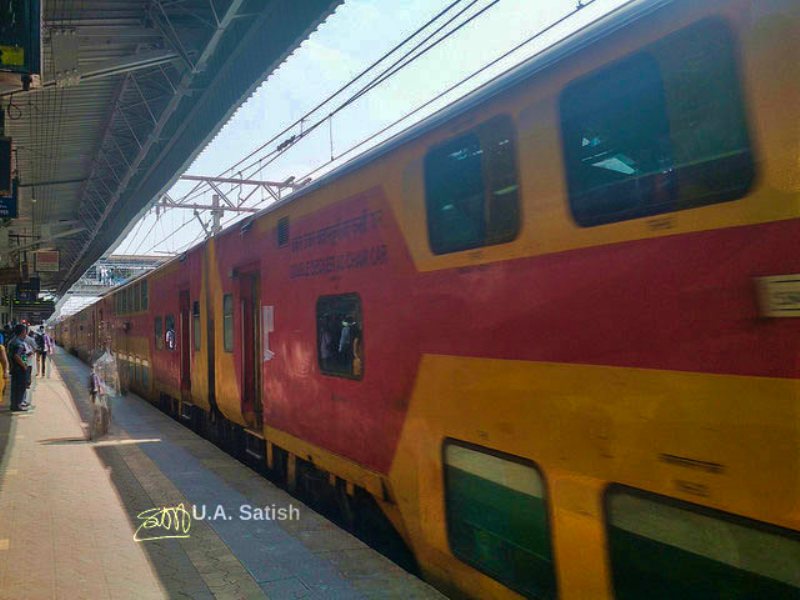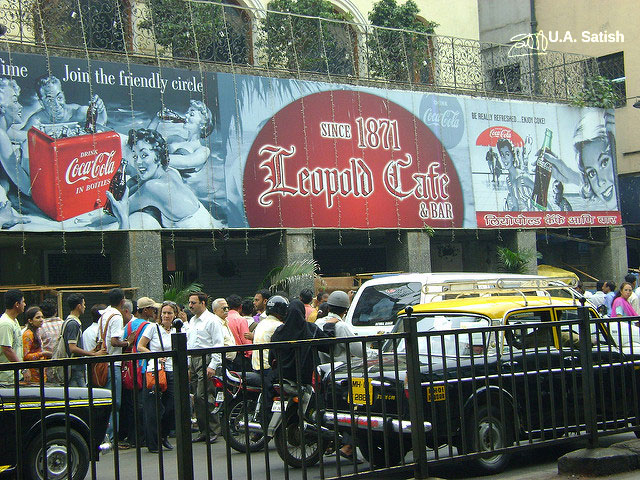
Afghan Church
The church stands in Duxbury Lane, Colaba. It also goes by the name of The Church of St John the Evangelist. The church commemorates the British troops who fell in the first Afghan War (1838-42). Work began in 1847 and the consecration was in 1858. The 60-metre tall bell tower was not completed until 1865.
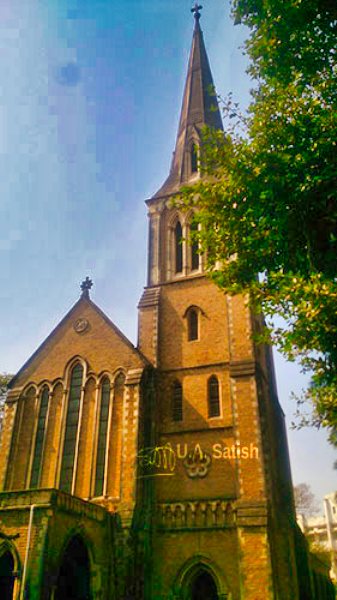
Leopold Cafe
This is a popular restaurant and bar on Colaba Causeway. Iranis established it in 1871 and serves multi-cuisine food. It was a target of terrorist attacks on 26 November 2008. The attackers opened fire with automatic guns killing ten people and injured many more. Four days after being peppered with bullets during the terror attack, the bar reopened for business to a full house.
The Mumbai terror attacks of 2008 left 166 people dead and embittered relationship between India and Pakistan. During the 60-hour onslaught, the assailants also ambushed a team of policemen. They killed six of them which included three high-ranking Mumbai police officers.
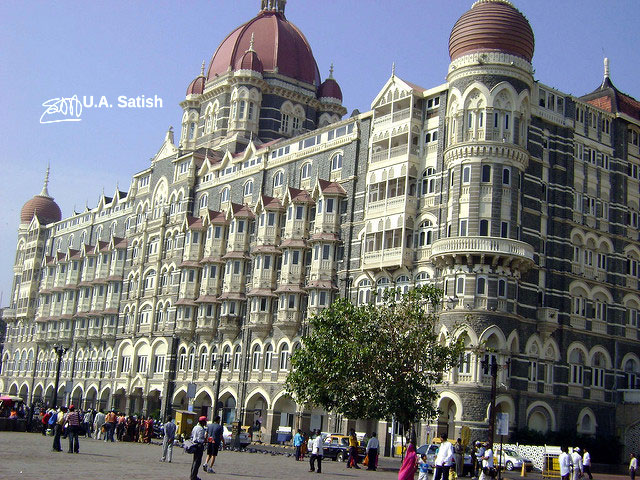
Taj Mahal Palace
Built in 1903, Taj Mahal Palace stands opposite the Gateway of India and faces the Arabian Sea. The hotel is a gracious landmark of Mumbai.
Terrorists attacked the hotel on 26 November 2008. They killed 34 people in the attack on Taj. This included hotel guests, employees, terrorists and a brave army officer, Major Sandeep Unnikrishnan. Taj Mahal Palace reopened after restoration on 15 August 2010.
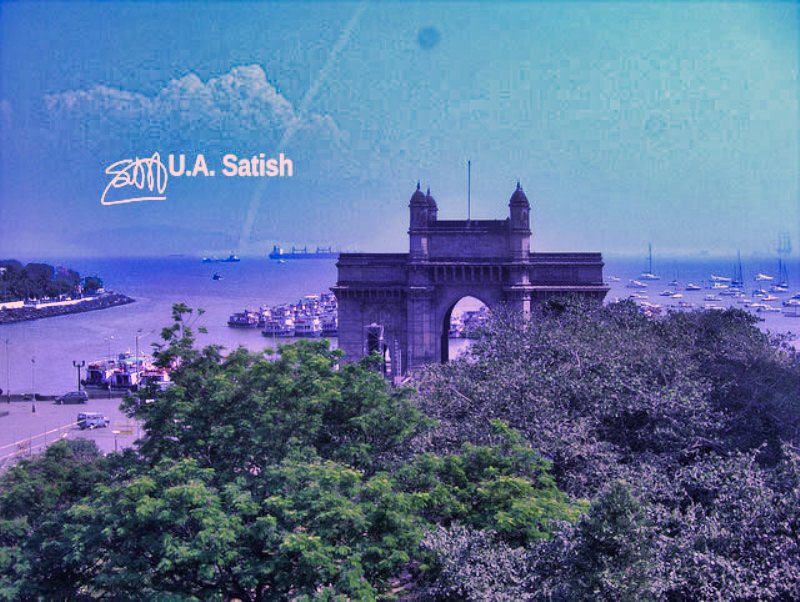
Gateway of India
The monument is a major landmark in Mumbai. The British Government built it in 1924. It is located in Apollo Bunder and overlooks Mumbai harbour. The monument commemorates the visit of King George V and Queen Mary to Mumbai. Many years later, the last of the British troops left India through this gateway. It is a popular tourist attraction in the city.
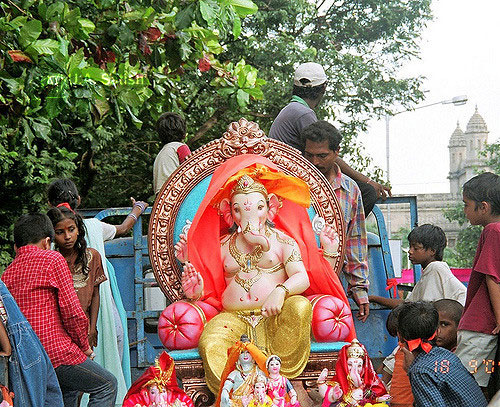
Festival of Ganpati
Ganpati Festival is celebrated with great fervour all over Mumbai. Devotees bring home murtis (idols) of Lord Ganesha. They worship the Lord for a day and a half, three days, five days, seven days or eleven days. The duration is influenced by family traditions and individual commitments.
On the last day of worship, devotees take out the idol in a colourful and musical procession for immersion at a beach. Ganesh Chaturthi this year will be observed on 7 September 2024 which marks the beginning of the festival.

Flora Fountain
The is in the city centre of Mumbai. Built in 1864, it depicts the Roman Goddess Flora, the Goddess of Abundance. It cost ₹ 47,000 to build, a princely sum at the time. It is a heritage structure now.
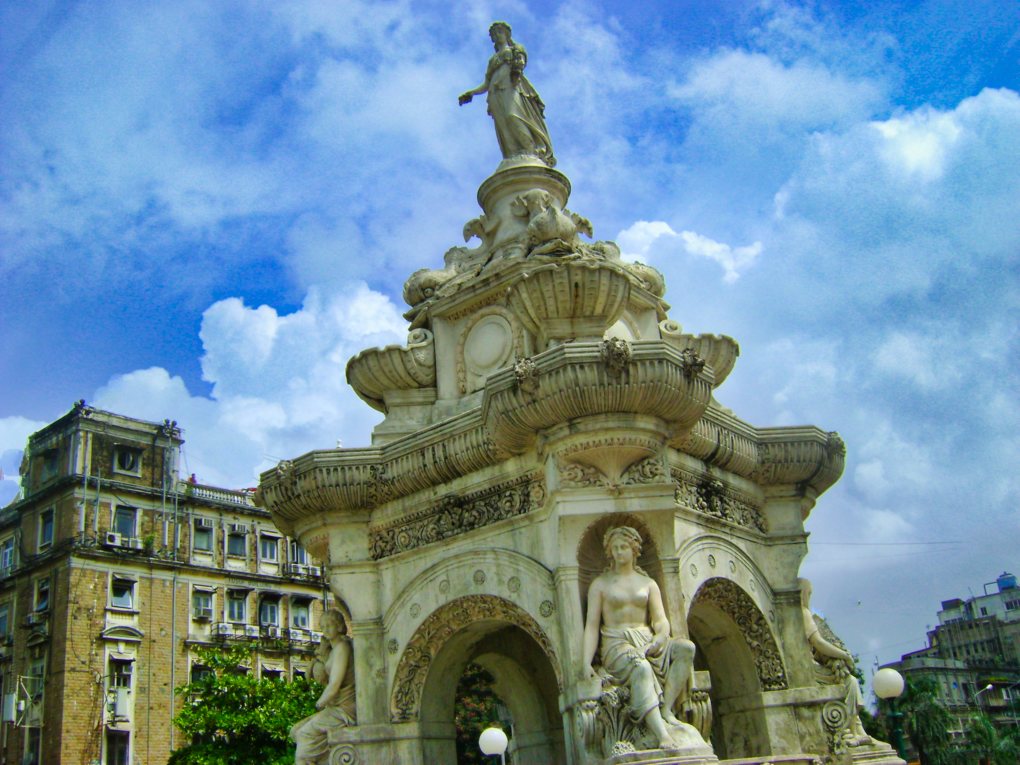
The sculptors used stone imported from England to create the fountain. It was originally created in honour of Sir Bartle Frere who was the Governor of Bombay at the time. Sir Frere was responsible for the deconstruction of Bombay Fort and shaping much of modern Mumbai. At first it was to be named after him but the name was changed before the fountain was revealed to the public.
The government renamed Flora Fountain in 1960 as Hutatma Chowk as a memorial to the martyrs of Samyukta Maharashtra Samiti. There is an imposing statue of Martyr with an eternal Flame next to Flora Fountain. Flora Fountain itself is under renovation.
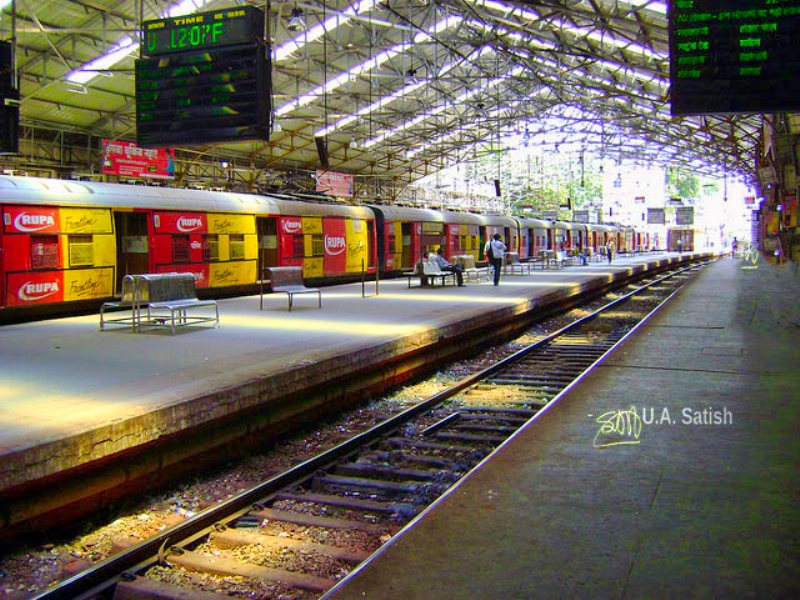
Churchgate Railway Station
This is the southern-most railway station in Mumbai. It has four platforms which are busy from 04:15 hours to 01:00 hours. It is one of the cleanest stations in the suburban sections.
From a visitor’s point of view, the main attraction in coming here is to see the dabbawallahs. A long standing tradition from the days of the Raj, tiffin boxes with homemade lunches are brought by dabbawallahs to Churchgate Station from where they are distributed to office workers in South Bombay. The boxes are brought outside the station and placed on large carts to be taken to hungry workers. Dabbawalas deliver more than 200,000 lunches every day. Dabbawalas now give management lectures at top Indian business schools, describing how the 125-year-old dabbawalah industry continues to grow at a rate of five to 10 percent a year.
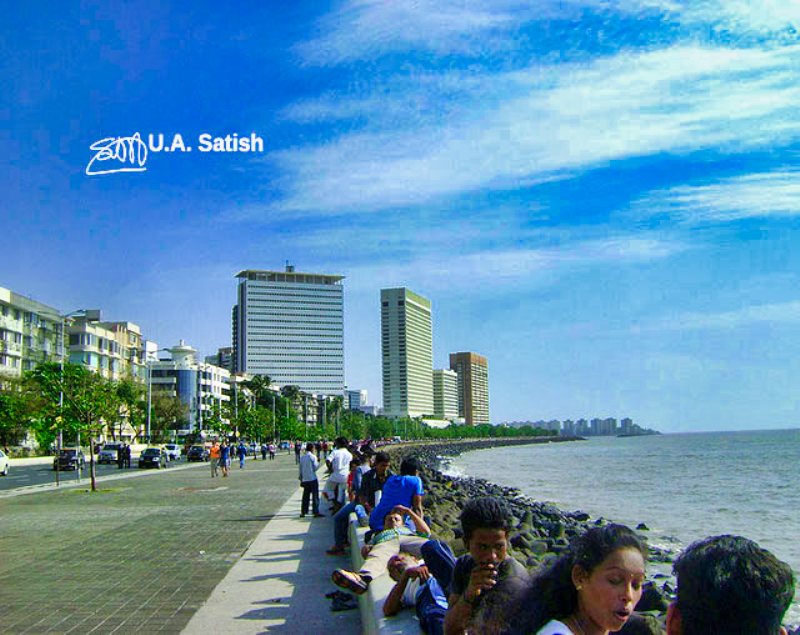
Marine Drive
The road is a 3.6 km long road bordering the Arabian Sea. It stretches from Nariman Point to Babulnath and Malabar Hill. A promenade runs parallel to the road. Many of the buildings on Marine Drive have an art-deco look. The sea often becomes rough during the rainy season.
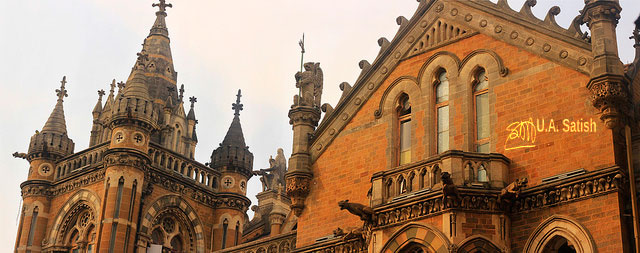
Chhatrapati Shivaji Terminus
Chhatrapati Shivaji Terminus (CST) is the main railway station in Mumbai. It was built in 1887 and used to be known as Victoria Terminus. The ornate building celebrates the golden jubilee of the ascension to throne of England by Queen Victoria. The main building uses sandstone and limestone. Quality Italian marble line the interiors . Stone figures of a lion and a tiger flank main entrance to CST. It is a UNESCO World Heritage Site. It is also the second most photographed site in India after Taj Mahal in Agra.
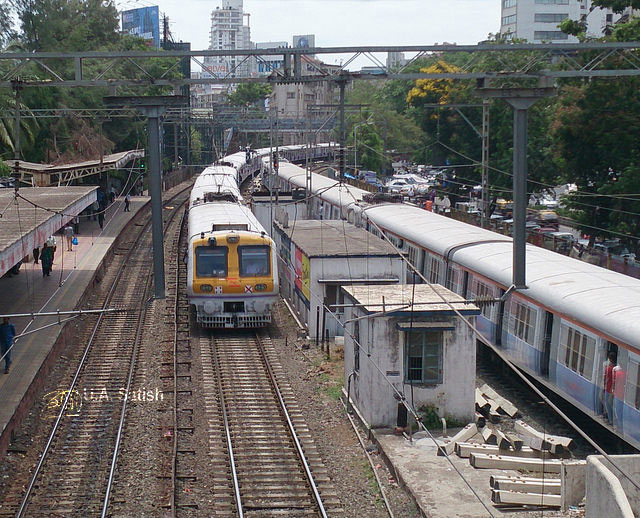
Suburban Trains in Mumbai
Local trains in Mumbai carry more than 7.24 million passengers every day. The passenger density is unparalleled in any city railway system. The entire route is electrified and there are trains running every 3-4 minutes during peak hours.
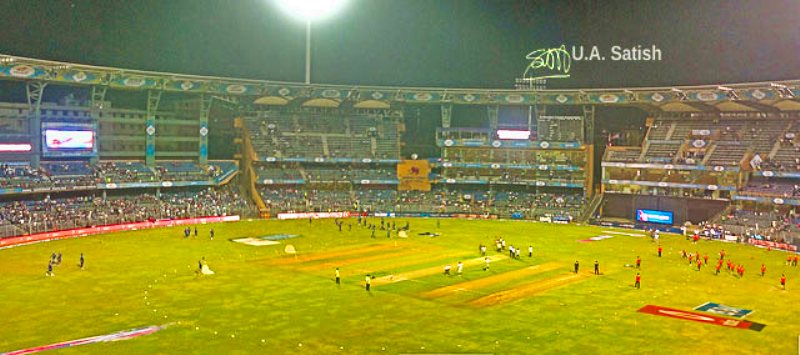
Cricket
Mumbai Indians cricket team represents Mumbai in the Indian Premier League. Their home ground is Wankhede stadium which has a capacity of 33,108 spectators.
The Dr. H.D. Kanga League conducts a cricket tournament in Mumbai during the rainy season. The league has had an unbroken run since 1948. It is the only cricket tournament to be held during the monsoon. Kanga League has been the nursery for some of India’s biggest cricket stars, including Sachin Tendulkar.
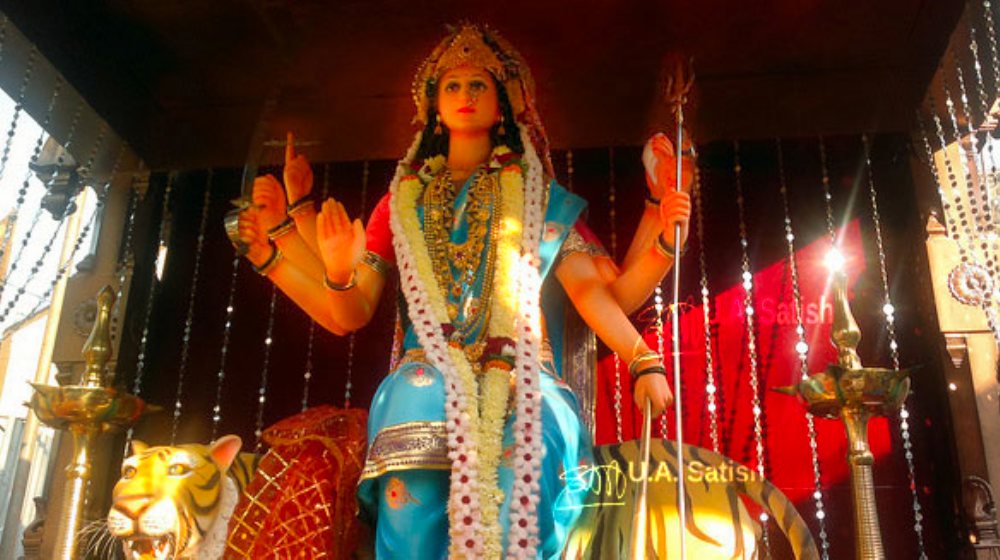
Durga Pooja in Mumbai
While Durga Pooja is the greatest festival in Kolkata, Mumbai too has several pooja pandals which engage Bollywood personalities as well as the common man.
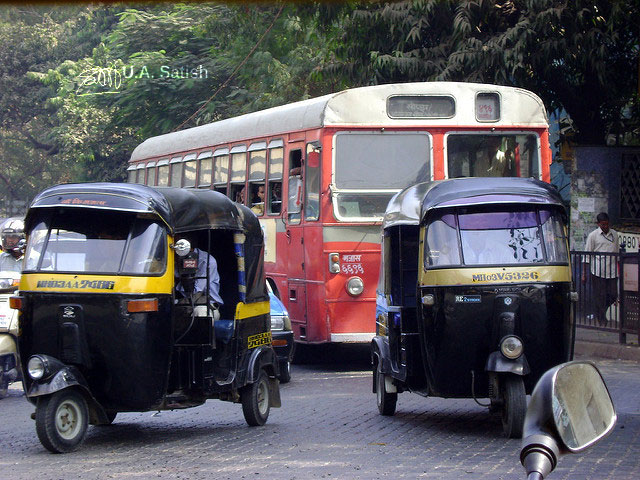
Autorickshaws in the Suburbs
I had stopped at the traffic signal to turn to MIDC Central Avenue. I took out my camera to shoot the traffic at the road junction. You can see a red BEST bus and a couple of autos. The rear view mirror of a bike which had stopped next to me ia also visible. There are about 150,000 autos in the northern suburbs of Mumbai.
Railway Station in Andheri
Andheri is one of the busiest stations in Mumbai. It serves Western and Harbour lines of Mumbai Suburban Railway. It also connects with Line 1 of Mumbai Metro.
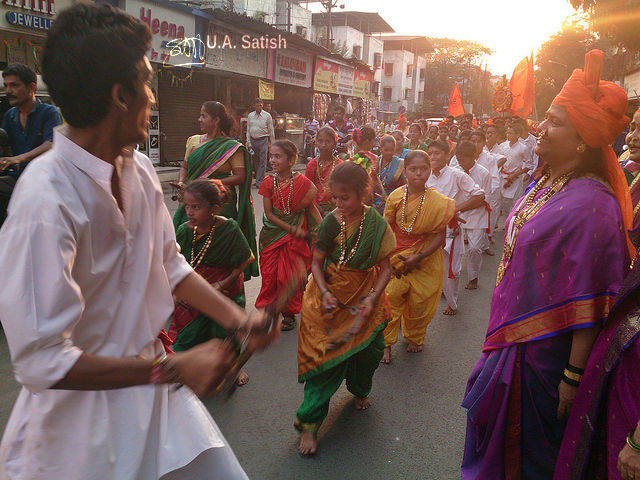
Lezim
This is a vigorous dance form. The dancers carry a small wooden instrument which produces a jingling sound when the dancers move. They dance to the beat of Dholki, a drum instrument, and wear colourful costumes. The dance is often a fitness drill in schools in Mumbai and elsewhere in Maharashtra.

Salt Pans
When one travels by train from Mumbai towards Virar and farther, salt pans appear on both sides of the tracks after Dahisar. The salt pans stretch across hundreds of acres. Salt pans are often in the middle of mangrove forests. They act as a buffer against flooding and absorb the tidal surges from the sea. Sixty percent of salt pans fall under coastal regulation zone and are out of bounds for development.
Workers from villages of Maharashtra, Gujarat and Bihar operate the salt pans. Salt production stops for four months in a year during rains. The workers start their work early in morning to escape the intense heat of the mid-day sun.
If you liked the post, you could…
Join more than 5,000 fans of UASATISH by liking us on Facebook, or follow us on Twitter and Instagram.
